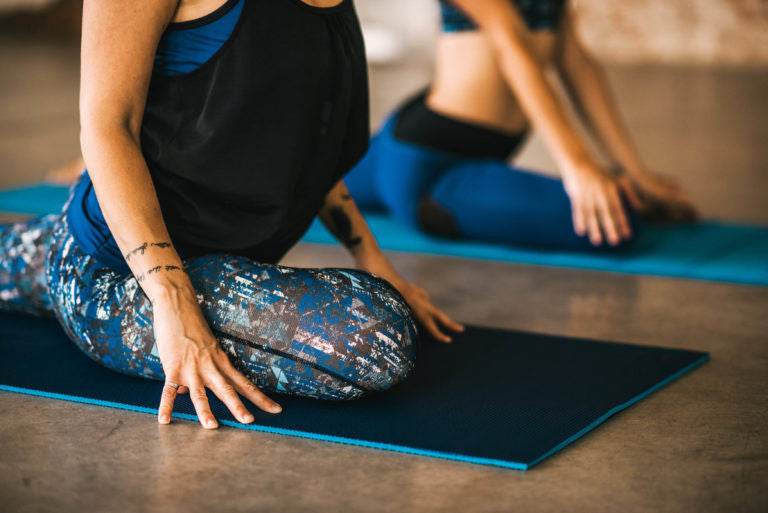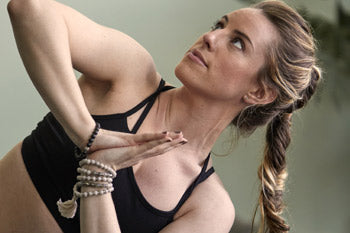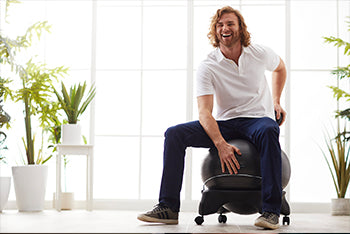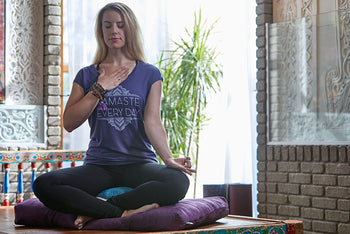Yoga Etiquette: 10 Tips for the Studio

by: Laura Hobbs
There’s no doubt: yoga culture can be daunting. Whether you’re new to a yoga studio or you need a refresher on the rules, here are ten general tips and tricks for making your practice a pleasant one for you and your classmates.
1. Arrive on time
Being in a hurry is already a tizzy-inducing situation, but rushing into a yoga class is stressful for both you and your classmates. Scurrying into a class after it’s begun is embarrassing, and it’s distracting for your fellow yogis. Be sure to arrive on time, giving yourself the minutes you need to check in, put away your items, roll out your mat, and gather any props you’ll need for class.
Got a few extra minutes before class begins? Sit quietly and focus on your breath, or do a few gentle stretches to warm up. And please, avoid picking your toes. (I wish I were kidding.)
2. Remove your shoes
Yoga is practiced with bare feet, and most yoga studios prefer shoes to be kept in the lobby or in an area close to the studio entrance. While going barefoot is courteous year-round—even during flip-flop weather—it’s especially important during rainy months and snowy seasons, when mud and slush are common. By removing your shoes, you’re not only helping with studio cleanliness, but you’re respecting a space that’s revered and cherished by others.
3. Check your ego at the door
Looking for a hardcore workout, complete with grunting, straining, and popping veins? Please look elsewhere. The yoga studio is not the space for showing off your superhuman strength or your competitive edge. If anything, you’ll garner a few eye-rolls and alienate those around you. Remember, you’re here for yourself—not anyone else.
Beyond the competition and showing off, mind your mood. Gossip, complaining, and negative attitudes are better suited for the local watering hole or the communal kitchen at work. Be gentle and respectful in your communication. Like the saying says, everyone you meet is fighting a battle you know nothing about. Be kind and respect others.
4. Tell your teacher about any injuries
Many teachers like to give gentle (or sometimes more intense) assists in class, like guiding you deeper into a pose or shifting your position to correct misalignment. If you’re sore, injured or just don’t feel like being touched, tell your teacher before class begins.
5. Mind your personal hygiene
This advice swings to both ends of the spectrum. First, please bathe, brush your teeth, wash your hair, and use a clean mat and a clean towel. Second, mind heavy perfumes, oils, and colognes, as strong scents travel easily during class. Regardless of which end of the spectrum you’re on, you’re subjecting those around you to your personal biome. Please make it a tidy and pleasant one.
6. Devices are a no-no
Want to get the stink-eye from classmates? Just bring your iWhatever to class. Whistles, dings, and blips are incredibly distracting and, frankly, downright rude. For many studios, this behavior borders on unforgivable, and could get your device—or you—kicked out of class.
So just put it on silent, right? Not so fast. For many (if not all), yoga class is a chance to escape the digital addictions and distractions we face in everyday life, offering you a rare chance to be fully present. By bringing your phone to class (even on silent!), you’re distracting yourself and those around you. Expecting an important call or a do-or-die text? Consider skipping class altogether, and returning when you can fully focus.
7. Be aware of your space
Yoga classes can get packed; when the last-minute stragglers file in, you’ll often see them scanning the room for a strategic spot to roll out their mat. Be neighborly by making room for them, if it’s available.
In a less-packed class, it’s common courtesy to stagger your mats so that the person behind you has a clear view of the teacher and the mirror. And unless you’re practicing with your bestie or your sweetie, give your neighbor some breathing room.
Lastly, mind your steps: it’s polite to avoid walking on a fellow yogi’s mat.
8. Minimize conversation
Many studios are considered a space for reflection, self-study, and focus, and maintaining a quiet atmosphere (if not an altogether silent one) supports this frame of mind. Granted, there are studios that have an air of social happy hour before class begins, and you’ll know this immediately upon walking in. But if the studio is quiet and meditative, keep it that way by refraining from chitchat. It’s not only polite, but it’s beneficial to your own state of mind.
9. Can’t stay for savasana? Leave before.
We all get it. Time is short, your schedule is tight, and your day is packed with need-tos and to-dos. But many of your classmates live for savasana, and by packing up and shuffling out during the most meditative and restful stage of the entire class, you’re disrupting everyone else and denying yourself the benefits.
The traditional benefits of savasana claim to restore your nervous system to its default settings and offer your mind a chance to sink into meditation. But above all, it’s a rare chance for you to do nothing for a few minutes. Close your eyes, focus on your breath, and feel the weight of your body against the floor. It’s your own little R&R opportunity. Take it.
Absolutely, positively have to leave class early? Let your teacher know before class, position yourself close to the door, and be sure to leave before savasanabegins. When it’s time to leave, pack up and scoot out as quietly as you can.
10. Clean up
Bolsters, blankets, blocks, straps—yoga is a prop-happy practice. If you’re borrowing the studio’s props, be sure to return them to their rightful place upon leaving. If you’re borrowing one of the studio’s mats, be sure to hang it up at their mat-cleaning station. Leaving your space as clean as you found it is respectful to the studio and students in later classes.
Also in Blog

Body Peace & Personal Empowerment

Yoga for Swimmers: Poses for Strength and Mobility







